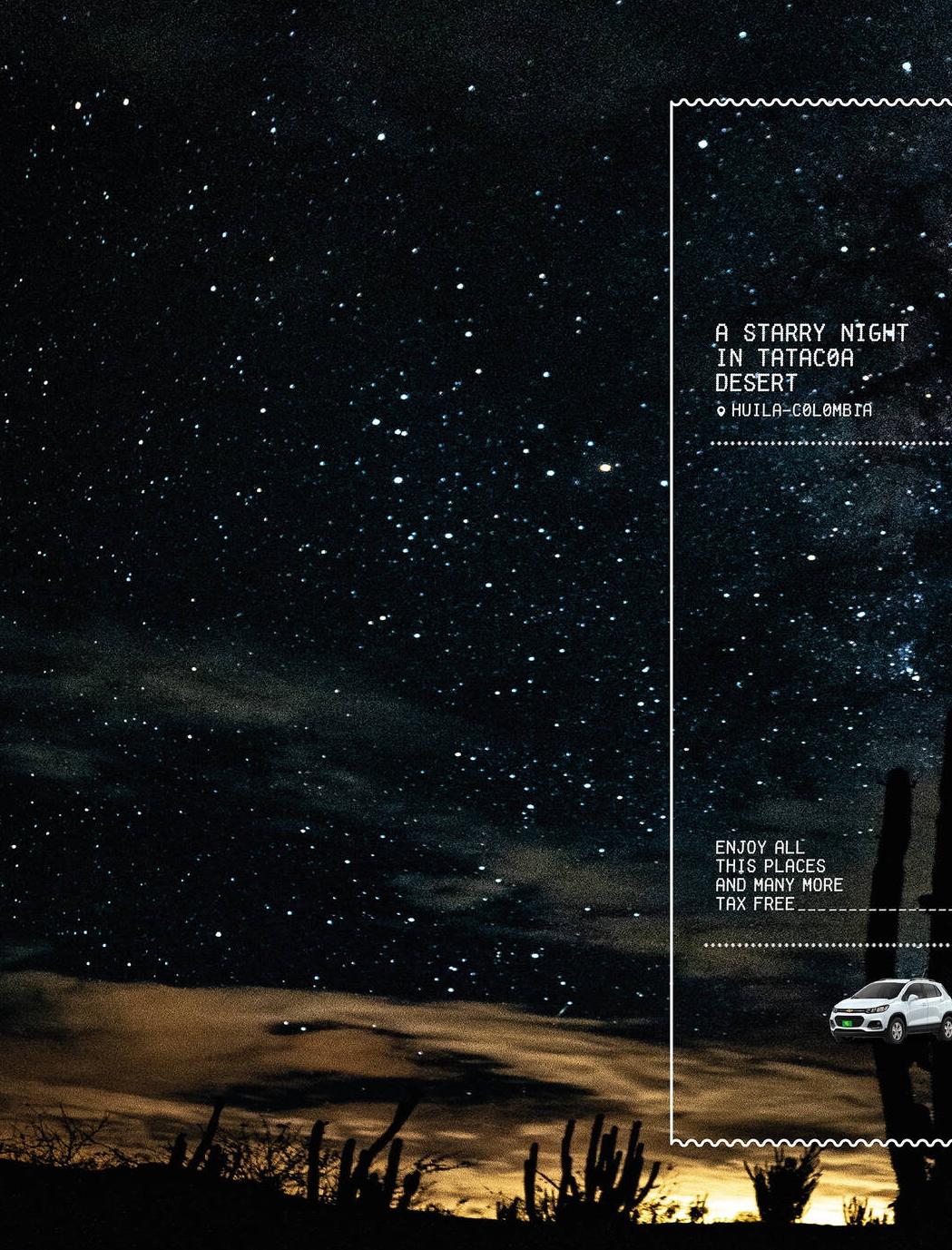


















































Technology has transformed every aspect of human lives. But what does it mean to be a technology leader in the digital age? And what are the skills or qualities needed to develop to become a better IT leader? Great leadership requires a vision, but it must tackle a real problem, and leaders must engage with teams to collaborate to solve problems. It will involve trusting and empowering employees by providing them with opportunities to share their innovative ideas and bring them to life. Ultimately, it's about guidance rather than standing over their shoulder or drifting into micro-management.
It's also crucial to bring together a diverse range of skills as well as voices. Technology leaders who utilise their talent pool can innovate, solve complex problems, and generate business growth. Wise Leadership must be the guiding platform in the field of technology. From industry 4.0 outwards, human and technology may compete for jobs. Industry 4.0 is the current trend of automation and data exchange in manufacturing technologies. It includes cyber-physical systems, the Internet of things, and cloud computing. Industry 4.0 creates what has been called a smart factory. But it will increasingly collaborate and complement technology and humans. So tech leaders should facilitate innovation, embrace collaboration between humans and technology, and transform operations, markets, industries – and the workforce with new skills.
Technology evolves on a daily basis and so organizations should constantly adapt to the cutting edge and bleeding edge to stay in the market. This requires agile leadership, and companies need the right leadership structure in place to allow for this evolution.
Large teams are not quick moving as that of the small teams that are easy to reassemble to move to new projects and challenges. This model is more product, customer, and service dependent and can help bridge the gap between technology and productivity. But to
form teams requires a clear understanding of the various skillset, scorecards, and purposes.
The company's resources need to change for a growth mindset that can ultimately drive the leaders to strategize things along with the latest trends and innovations. The companies and organizations should be able to dislocate themselves before their competitor does.
It is vital for leaders to be strong advocates for their teams so that individuals and the team as a whole can achieve their set goals. The leader needs to equip the team with the right resources and direction, understanding the strengths and weaknesses to coordinate effectively. This can be of great help in providing training or additional staff with the right skillset.
In the current scenario, communication skills are imperative. The team members need to receive constant feedback so that they can adjust goals moving ahead. More frequent communication means more transparency, which is the foremost key in developing teams.
The tech leaders of the future need to be able to provide a clear direction and strategy to staff. They should be capable enough to influence and guide people. Tech Leaders outgrow when they have followers rather than the transitional model where leaders are promoted regardless of the following. It is wise to be mindful of the strategies and technologies being adopted by the leader for the future of the organization.
Arti Chaudhary (Content Analyst)


















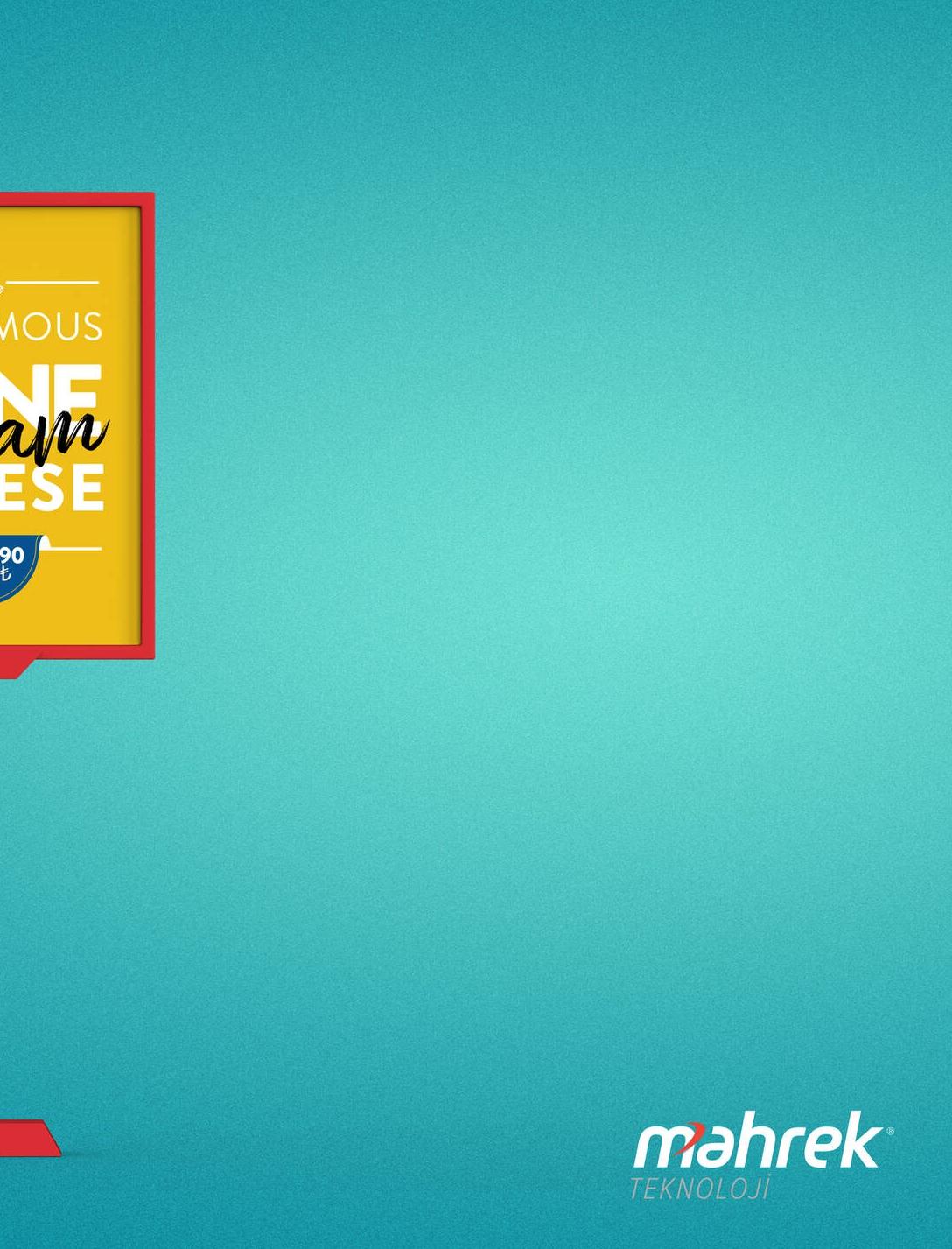
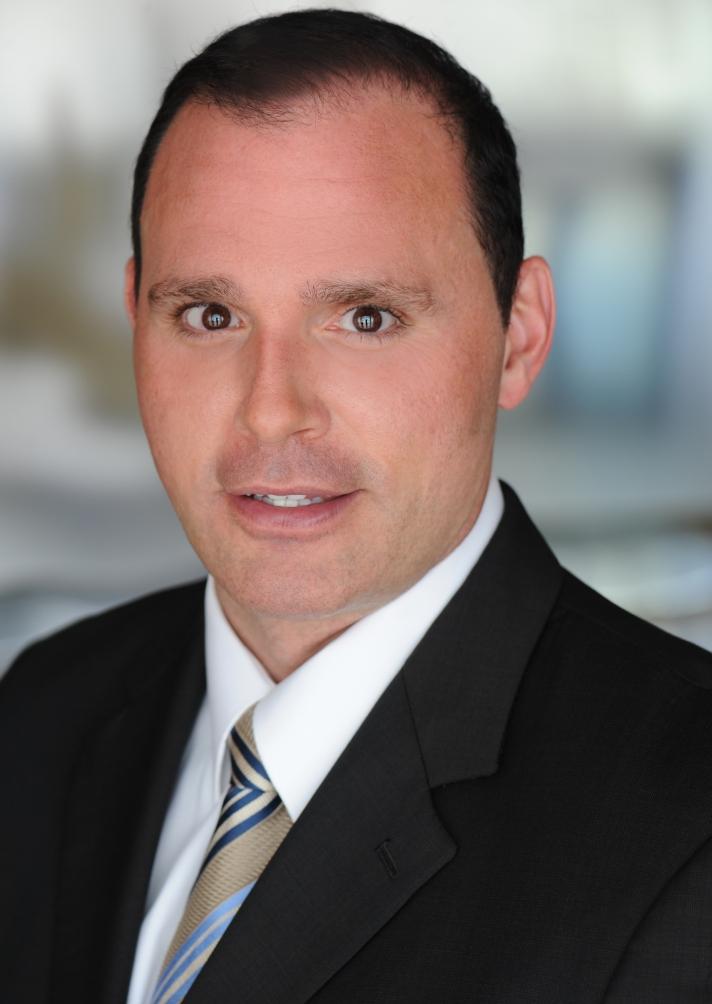
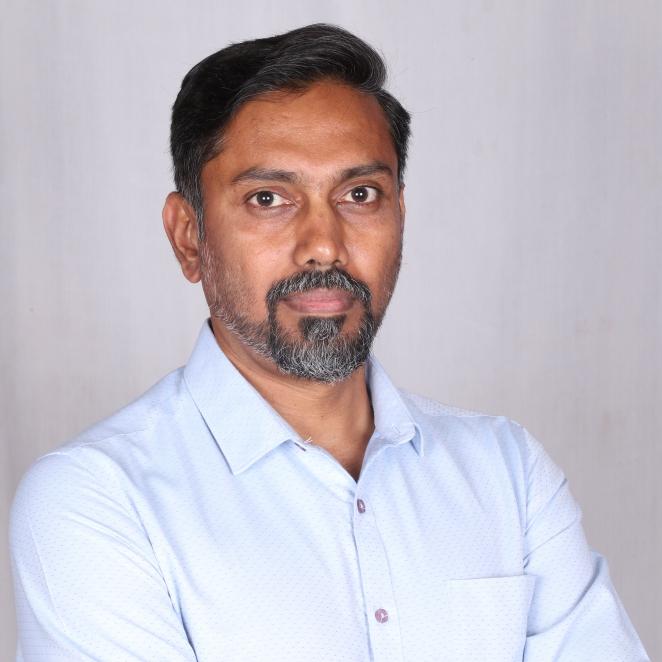
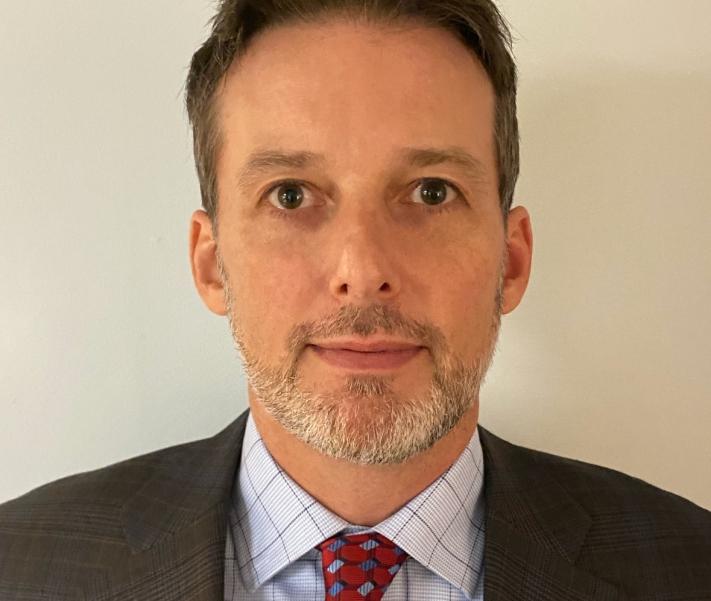
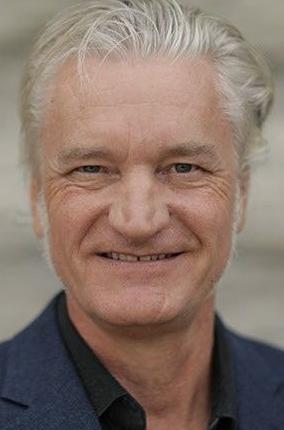 Michael Harris
Dr. Garrick Villaume
Shailendra Mruthyunjayappa
Michael Harris
Dr. Garrick Villaume
Shailendra Mruthyunjayappa
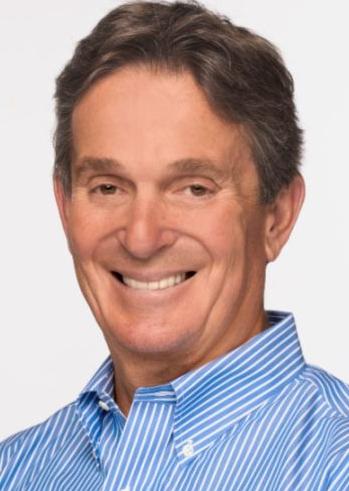
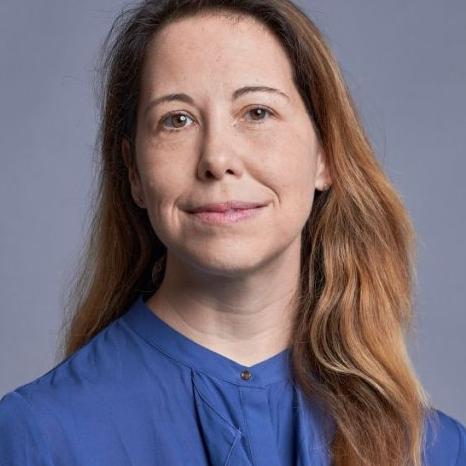

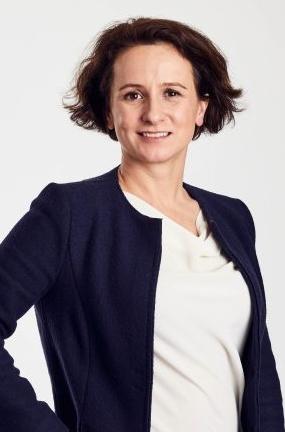 Shiana Siruma
Shiana Siruma
Dr. Eva Marie Muller-Stule
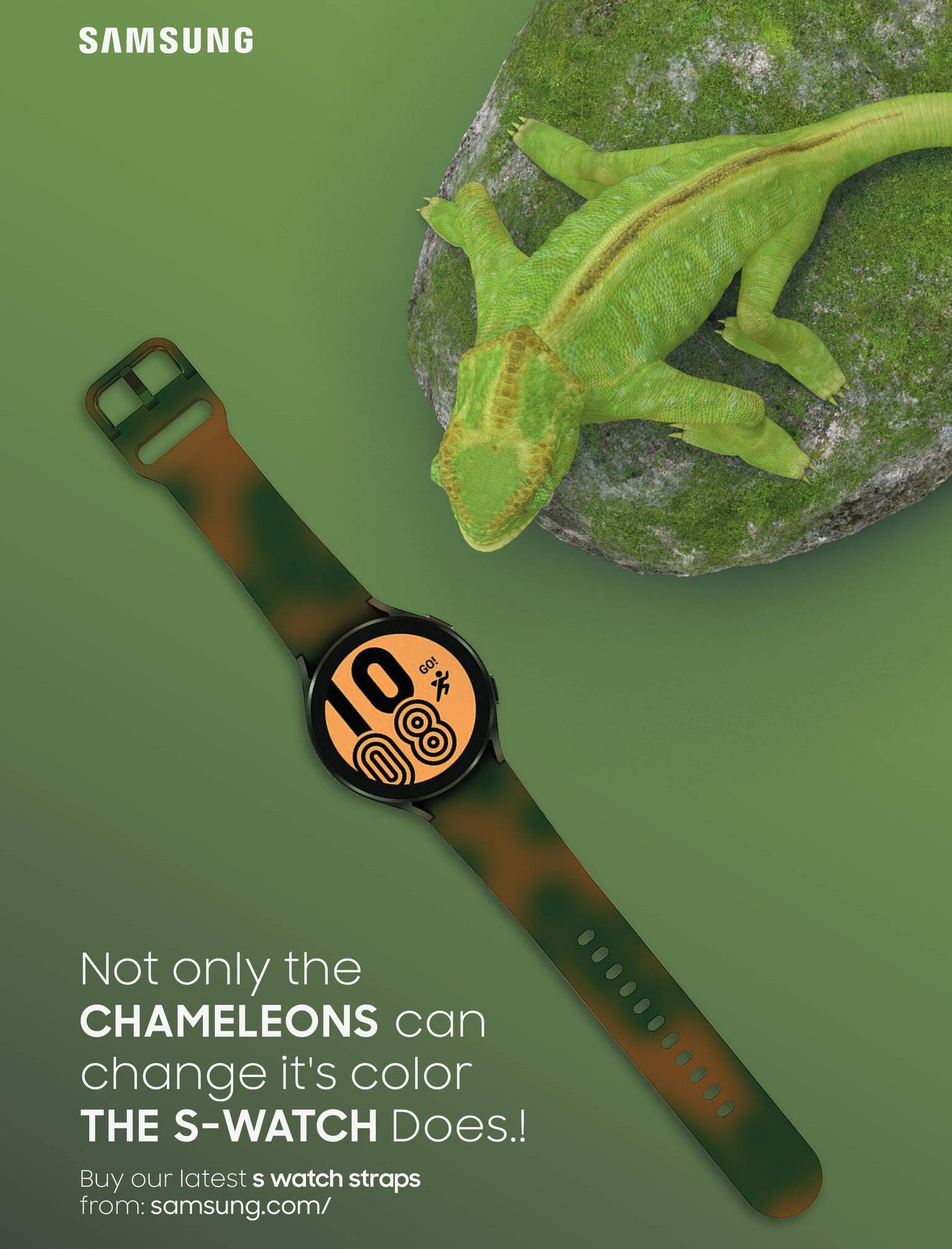
Anthony has 25+ years of career in data analy�cs, data science, and CRM. He started his profession as an SQL programmer in database marke�ng at American Express. His career began to skyrocket and made him land pres�gious roles in Cross Sell Analy�cs at Wells Fargo to some of the first analy�cs and data science units in the industry
Shailendra Mruthyunjayappa is the CEO of Fintellix. He is a career finance technologist with over 2 decades of industry experience gained in large enterprises and startups around the world. He is also a thought leader, board advisor, and mentors several startups. With his diverse and dis�nct experience, he worked with some excep�onal individuals, including several colleagues and clients.
fintellix.com
Michael Harris is the CTO of NextgenID. He is a confident and humble mentor who listens, assembles, integrates, and shares the dis�lled knowledge and value introduced by new technologies.
Being the youngest of the leadership teams, the greatest lesson that he learned was to listen first to what is needed and then to curate those technology assets for purposeful impact. www.nextgenid.com
Dr. Garrick Villaume Co-founder & CSTO NETZRO SBC Garrick Villaume has a rich background in high energy physics working with instrumenta�on, computa�onal, and analy�cal systems to test models and refine the understanding of energy and ma�er. For over 25 years, Garrick worked in the data storage and solar industries that dealt with developing analy�cal decision support systems spanning lab, fab, and field for global technology enterprises.
Chief Data Scien�st and AI & Advanced Analy�cs prac�ce leader for Middle East and Africa
Dr. Eva Marie Muller-Stuler is the Chief Data Scien�st and AI & Advanced Analy�cs prac�ce leader for the Middle East and Africa for IBM GBS. Eva has led several transforma�ve solu�ons and innova�ons for the company’s clients. She has implemented Centres of Excellence, created value-based AI delivery in Oil and Gas, and architected real value using data science. www.ibm.com
Heather Pace Clark is the CoFounder of Gily�cs. She completed her MA in Interna�onal Technology Policy from Harvard and went on to study MBA from Trium Global Execu�ve MBA. Heather possesses more than 15 years of interna�onal experience in technology. She worked as a senior leader at GE Power and her current focus is aiding company growth.
www gily�cs.com
CEO & Founder SpaceX and Tesla Elon Musk is a business magnate and investor. He is the founder, CEO, and Chief Engineer at SpaceX; angel investor, CEO, and product architect of Tesla, Inc.; founder of The Boring Company; and cofounder of Neuralink and OpenAI. Musk is the wealthiest person in the world according to both the Bloomberg Billionaires Index and Forbes' real-�me billionaires list. www tesla.com www.spacex.com
Satya Narayana Nadella is an Indian-American business execu�ve. He is the Execu�ve Chairman and CEO of Microso�, succeeding Steve Ballmer in 2014 as CEO and John W. Thompson in 2021 as chairman. Before becoming CEO, he was the execu�ve vice president of Microso�'s cloud and enterprise group, responsible for building and running the company's compu�ng pla�orms.
Shiana Siruma, Vice President –Customer Solu�ons APAC, Strata Results has been a people’s leader for 14 years. She is mo�vated by the passion for a people-focused environment and flourishes in mee�ng with global leaders and engaging for impact. She manages strategies for brand awareness and promotes company offerings through various pla�orms such as social media, radio, and live web streaming.
Reed Has�ngs is the Co-Founder, Chairman, and CEO of Ne�lix, and sits on a number of boards and nonprofit organiza�ons. A former member of the California State Board of Educa�on, Has�ngs is an advocate for educa�on reform through charter schools. Has�ngs went on to a�end Stanford University, gradua�ng with a Master's Degree in Computer Science.
The Analytics Hall of Fame (AHOF) is a meritbased award and recognition site for data analytics and digital professionals who demonstrate significant and publicly verifiable achievements. As a long-time evangelist of data analytics (DA) based business decisions, Anthony Branda, Founder and CEO of AHOF, established the company to develop a practitioner community in this space. The company releases articles with leading edge content from practitioners in the field and develops gaming functionality to help professionals sharpen their DA skills,shareacommunityexperienceandhavefun! Founded at Pace University in New York, AHOF conducted its inaugural award ceremony in 2019, honoring famous leaders like V Kumar, Tom Davenport Vishal Kumar, Randy Bean, and Beth Comstock to name a few.

Anthony has had an enduring 25+ years of career in data analytics, data science, and CRM. Starting his profession as an SQL programmer in database marketing at American Express, Anthony's career began to skyrocket
and made him land prestigious roles from being the VP of Cross Sell Analytics at Wells Fargo to leading some of the first analytics and data science units in the industry even before the position of Chief Data or Chief Analytics Officer was known. Besides this, he has led teams at Bank of America, RBS America/Citizens as its CAO, and at Citi, he was leading their North American Consumer and Commercial Decision Management. Recently, he has been applying his skills, knowledge, and experience to analytics and digital transformations in the global arena like the CDAO at ASB - a subsidiary of CommBank, (#1 international bank in Australia), and as the Group Head of Data Analytics for over seven countries in the Gulf RegionforAhliUnitedBank.
Anthony's claim to fame is demonstrated by his ability to connect the dots and mesh business strategies, technical know-how, and data science into a cohesive approach, communicating and driving consensus with stakeholders to drive the best business and customer outcomes. He has had rotations in all aspects of Banking Information Management and Analytics including consumer, commercial, investments, private and retail banking, and real estate. Anthony claims that he is a vociferous
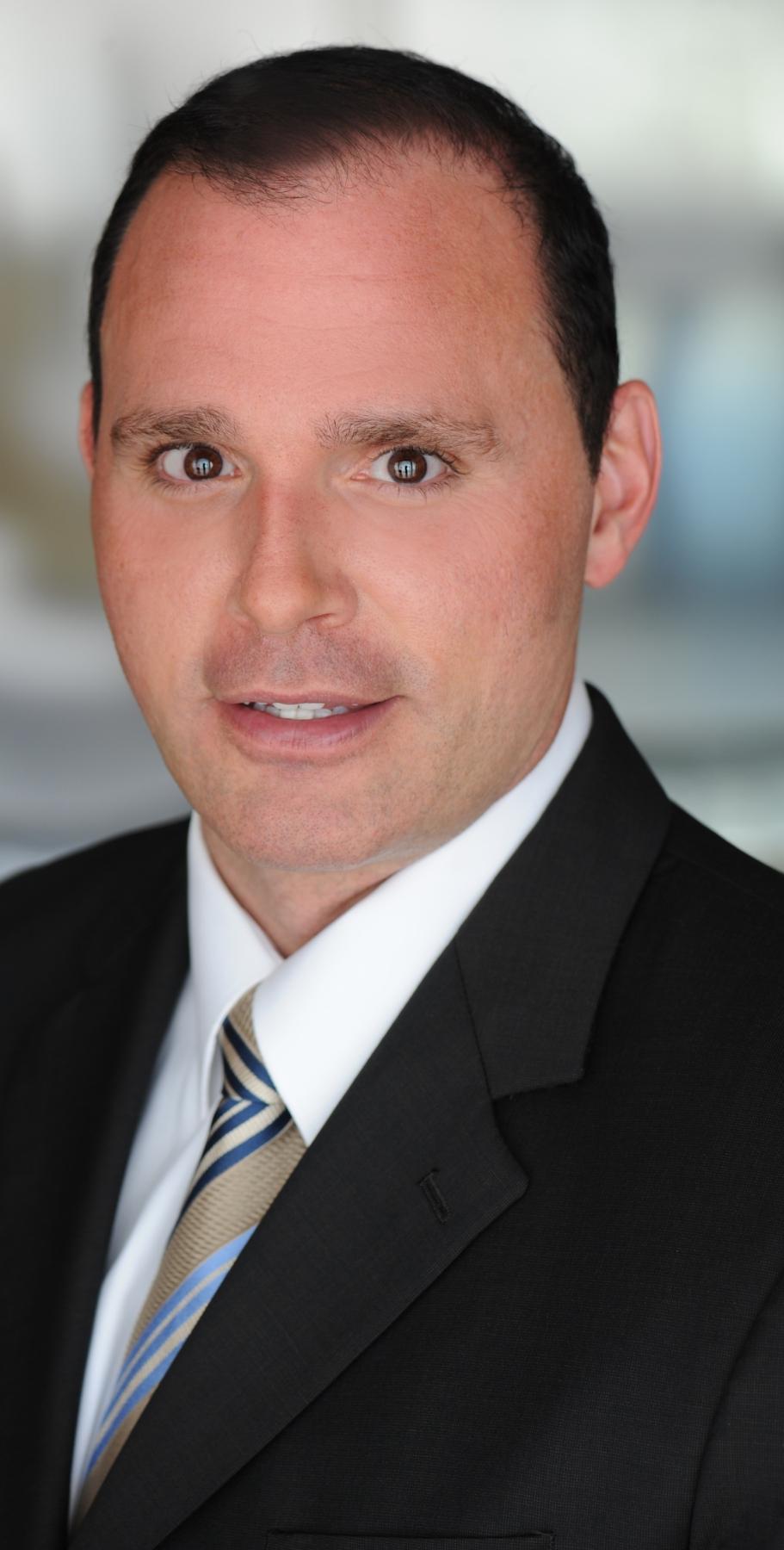
Corporateperformanceisaboutoptimizing keybusinesslevers,andthosecompanies thatfullyembracedataanalyticsandAIwill bestandoutperformers.
“ “
AnthonyBranda ChiefDataandAnalyticsOfficerandFounder AHOF
learner, completing Certifications in Analytics (CAP) and Data Science (John Hopkins), and AI (MIT), in addition to earningaDoctorateinMarketingAnalytics.
As an evangelist of DA, Anthony founded an M.S. in Marketing Analytics at Pace University He led a group of experts and industry executives to establish the Analytics Hall of Fame (AHOF), where he is the CEO. Besides, he is also an infamous author in practitioneroriented journals with articles on how firms can integrate analytics with marketing practices to improve businessresults.
At the beginning of Anthony's career, he reveals that he learned the criticality of fact-based decisions, and just as importantly, the reality that not all relevant facts are easily and quickly available. Direct marketing enabled him to understand the test and learn concepts and data science methodologies, forming the foundation of his knowledge about measuring success. In the early years of credit cards, Amex, MBNA and Bank of America were formative in terms of extending Anthony's knowledge about statistical methods, omnichannel engagement, andCRM.
As he began leading larger teams, Anthony learned that empathy, clear communication, and fostering change were critical leadership competencies that were important to persuade clients to invest more in analytics and take calculated risks in new test ideas and opportunities. Also, transforming startup functions at
CommBank, AUB, and Embrace Home Loans has taught him never to neglect business problem framing and use case identification, regardless of today's advanced technologies.
Rotations at Accenture and running a consulting business gave Anthony an appreciation for the data lakes, cloud-based tech, and open-source tools and how to ensure alignment with solutions for business problems. Like many human endeavors, the use of DA is a marriage of art and science, which would include math, engineering, and tech, which must be appropriately married to the business problem frame. The art stems from deploying the solutions correctly, this is why data analytics and AI are a blend of heavy sciences but also require a fair amount of skill and communication to ensure a successful path to deploy Anthony is also quite amused by the act of balancing all these variables to drive towardthedesiredoutcome.
Anthony reveals that in his career, he has often run into walls deploying analytics, primarily due to incorrect incentive structures and KPIs, which disincentive analytics usage with relevant customers. For a marketing program, the team generally targets profitable or as many customers as possible or the highest volume of customers. Those are very different objectives with very different program profits and expense results, and customer outcomes The clarity in articulating the business problem and the desired outcome should guide
KPIswiththesupportofleadershipandstakeholders. According to Anthony, leadership and top management support have been vital to changes in KPIs and removing barriers to success, hence ensuring the accompaniment of stakeholders and maximum management support before building analytics solutions are of primary importance to Anthony. It provides a path to deploy. He takes us through another example of when each LOB has distinct product sale goals for their business. The firm still aims to attract the right customers in the right channel to maximize customer value The business models and KPIs must be modified through influence and proof points to gain acceptance of this enterprise view.
Very often, silos, and even in some cases, agile-at-scale with its tribe mode can create a tribal mentality, which is attheexpenseofthecustomerandtheenterprise.
Lastly, Anthony claims that data analytics is about prioritization and efficiency gains, whereas business is about volume and scale. Using targeting tools and data science often requires a trade-off between losing volume andhittingthecorrecttargets.
Anthony states that technology is an 'enabler'. Therefore, the businesses that receive the benefits of technology need to be heard. He continues that leadership attributes to facilitate this goal include empathy, listening skills, collaboration, and negotiation. Leaders are SMEs but also diplomats and deal makersthey must work toward compromise as not all technology gets deployed without challenges. Most importantly, technologists must be trust builders and havethewillingnesstoeducateothers.
Anthony claims that the team deploys a data monetization process to ensure that there is always a pipeline of proactive pilots in the works. When combined with an agile team comprised of data science, test and learn, design thinking, creatives, analysts, and
prototyping skills, new initiatives and innovations are developed to grow value, but in a measured and controlled way. This is where lean startup thinking combined with advanced experimentation techniques and design thinking can help the firm get traction with therightsolutiontomonetizefortherightaudience. Furthermore, data analytics innovation must be in every organization's budget - bandwidth and resources must be dedicated to remaining competitive in today's world, mentions Anthony He further adds by exemplifying that anorganizationmightcommitthefundingfortheteamto pilot 2 or 3 new test ideas per quarter for subsequent rollout. Beyond BAU insights and analytics, which tend to be more reactive, these pilots, with a defined business case and a definition of success are key to continued growthandvalueaddition.
Anthony remarks that modern leaders must be well versed in cognitive technologies such as deep learning and machine learning, specifically for marketing, customer management, and risk applications While broad scale AI adoption is still far off in banking, beachheadsareemerging.
In banking, many aspectsof AI, automation,and cloud are taking hold, but Anthony believes there is still a long way togo.
He also mentions tools such as Pega and robotic process automation, which make data movement easier, and are essential for CDAOs to understand and deploy. The concept of a single source of truth can be further advanced if we don't have to move data around, but using these virtual architectures to access data will be quite a changefromcurrentwaysofworking.
The vision of AI is to have data analytics and Auto ML be the brain behind all decisions in the organization, opines Anthony. That is the focus area for many CDAOs. He continues that changing marketing automation and customer engagement tools into real-time customer decision engines and platforms that drive the next best
experience or Next Best Everything will allow the whole visionanduplifttobeachievedbyusingmachinelearning a n d o t h e r c o g n i t i v e t e c h . T h e s e t o o l s u s e recommendation or decision engines to serve the proper interaction, offer service experience, and make risk or underwriting decisions to maximize customer value and drive a good customer experience. The customer data platform and the customer decision engines leverage data Robot, Pega, Adobe, and Salesforce software, as well as the brain trust of data scientists and engineers to makeitareality
According to Anthony, the idea that investment advisors and bankers can use while scenario planning is to give good guidance and advice using AI to transform banking, and the technique is already making gains but is facing headwinds due to investments in skills and technologies and understanding of the benefits. Other applications such as chatbots and sentiment analytics using NLP or MLhavebecomemorematureandcontinuetoberefined anddeployed.
For banking analytics, Anthony envisions the role of the CDAO continuing to evolve with more and more companies bringing both the data and analytics together under one roof or leadership to get more traction and ensure that data drives insights that lead to business impacts. The industry has pivoted heavily to engineering and towards a very fractured ecosystem with many technologies and tools. But he believes that companies will swing back to a more strategic and integrated business view over time as the technologies' resource
capabilities need to solve a defined business purpose. He adds that in some firms, the CDAO will ultimately report to the COO or CEO, as a peer to the CMO, Digital Officer, CTO, CIO, and CFO This will happen as data analytics continue to drive impact and be viewed as a business assettoimprovealldecision-making.
Meanwhile, in terms of the Analytics Hall of Fame, Anthony confirms that the company is pivoting to enable the best content to be shared by practitioners to demonstrate their knowledge and skills. He accredits that there should be a place for data analytics professionals to have their own space to show their know-how outside of business research and the business media reporting on the DA practice as observers. The company aims to carve out a space for data analytics practitioners to describe what they are doing, in their ownwordsanddescribetheirsuccessstories.
When it comes to leadership, Anthony says that leaders and executives generally believe they have developed their role better off than the way they found it. This is a good mindset to have and can often mean the difference between having a job and having a career. But adding the totality of possibilities to one's role makes it more exciting and valuable for the team and firm. "Be curious, listen well, be humble and show empathy to your stakeholders. Learn the latest techniques and practices to transform your business and yourself," he advises. He finishes his statement by asking emerging leaders to make personal transformation as crucial as business transformation.
As the financial services industry evolves with rapid digitization and innovation, it is bound to expand financial inclusion along with enhancing customer experience and convenience, leadingtosignificanteconomicimpact.
While the government and regulators encourage this disruption, they have to ensure orderly growth and expansion, enhance systemic stability, and improve trust andconfidenceinthefinancialecosystem. Fintellixis one of the leading regtech and suptech companies enabling supervisors and regulated entities cope with the dynamic regulatory environment. Fintellix solutions include data management, multi country regulatory reporting, credit risk calculations, and supervisory technology for the banking and financial services industry Head quartered in India, they have offices and serve customers in US, UK, Middle East, SouthAfrica,South-EastAsiaandAustralia. Shailendra Mruthyunjayappa is the CEO of Fintellix. He is a career finance technologist with over 2 decades of industry experience gained in large enterprises and startups around the world. He is also a thought leader, boardadvisorandmentortoseveralstartups.

Let us hear his views on the company, industry, leadership,andthefuture.
“Over the next few years, I expect to see the emergence of 'financial services in the flow' for consumers and businesses. with seamless integration of financial services in life and business”
“At Fintellix, we continue to develop our API driven architecture for data management, risk management and regulatory process automation; we are embedding machine learning models that improve the regulatory workflows and insights delivered; and we are experimenting with blockchain based machine readable regulatory configuration services”
“I firmly believe that people have infinite potential and are inherently good. With a little inspiration, motivation, clarity and push, people can achieve remarkable results”
Our purpose is to deliver technology to the financial industry that enhancesfinancial stability and risk
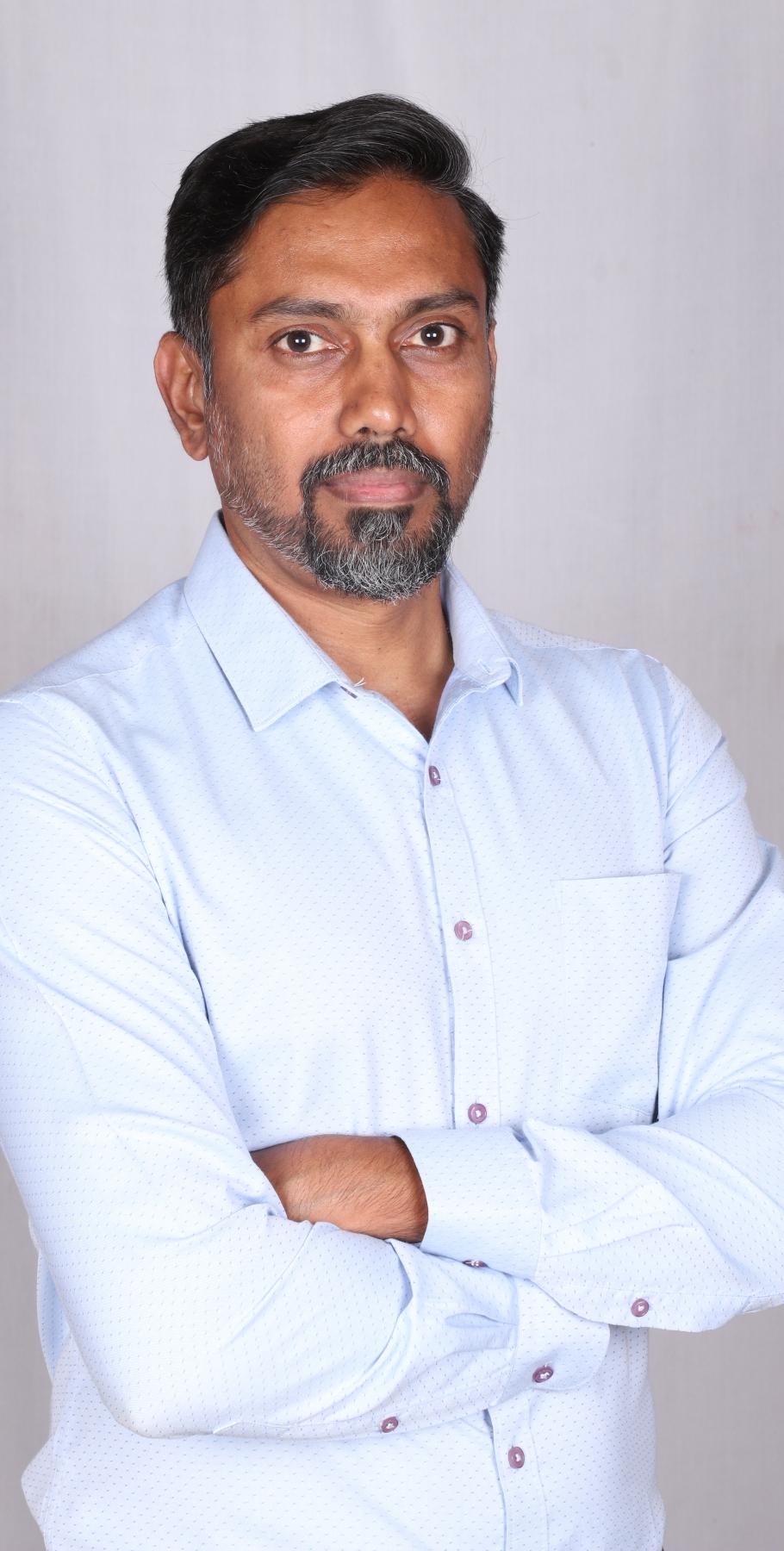
Overthenextfewyears,Iexpecttoseethe emergenceof‘financialservicesintheflow’ forconsumersandbusinesses.with seamlessintegrationoffinancialservicesin lifeandbusiness.
“
“
ShailendraMruthyunjayappa CEO Fintellix
management, which is increasingly important in today's interconnectedfinancialecosystem.
We act as the regulatory compliance partner to financial institutions. Our data management, risk calculations and regulatory reporting solutions, together with our consulting services, helps financial institutions meet ongoingregulatoryneeds.
We have adopted a hybrid of enterprise and cloud offerings to serve financial institutions of all sizes and complexities, and to help them move up the maturity curve.
Our platform based consultative approach helps us deliver solutions in a structured, standardized, and scalablemanner.
At Fintellix, we want to innovate and be the change agents, creatingdisruptive, sustainable, and scalable solutions which can help improve efficiency, reduceregulatory cost,and add value to the financial ecosystem.
We were one of the earliest regtech players to adopt big data and cloud technologies, which enabled us to process data at scale and offer our solutions on the cloud. Our low-code platform built on microservices architecture a l l o w s c o n t i n u o u s i n t e g r a t i o n a n d r a p i d solutiondelivery. We continue to develop our APIdriven architecture for data management and regulatory process automation. We are also embedding machine learning models that can help continuously improve the regulatory workflows and insights delivered. And we are experimentingwithblockchain-basedmachine-readable regulatoryconfigurationservices. We earmark substantial capital and leadership bandwidth for innovation projects in pursuit of our growthobjectives.
Over the next few years, I expect to see the emergence of “financial services in the flow” for consumers and
businesseswith seamless integration of financial servicesinlifeandbusiness. With embedded finance, we are already seeing financial products integrated into various aspects of life and business This will evolve further into prediction of financial needs, personalization of financial products, and integration into users' daily activities, delivering seamless user experience while meeting all financial needsastheyarise.
Riskandregulatorytechnologycameintobeingalmostas an afterthought, following the rapid automation of the financial industry in the 90s. It further gained prominence after the economic crisis of 2008-09, when the industry faced a slew of regulatory changes aimed at improving financial stability In the current state, financial institutions have embraced regulatory technology and strengthened their processes, but haveimplemented these as downstream solutions, having to endure complex integrations and data transformations Faced with increasing pressure from regulators to implement certain risk management practices and provide high quality data at a higher frequencyandmoregranularity,financialinstitutionsare struggling to cope with the backlog of regulatory changes.
Looking into the future, I believe regulatory process and technology will move upstream, and become integral to the design of enterprise architecture. It will become foundational, rather than staying on the fringes, to financial product development and process engineering. This will enable financial institutions to promote a riskaware culture while handling regulatory requirements betterandfaster
Regulatory technology is becomingeven more important with the advent of new categories of risky assets such as crypto currencies, increasing interconnectedness from open banking/ open financeinitiatives, proliferation of
fintech players in the financial value chain, and thegrowingcomplexitiesofdataprivacyandconsent.
During my 2 decades of diverse and distinct experience as a technology professional, entrepreneur and business leader gained in various geographies, I've been privileged to work with some exceptional individuals, including several colleagues and clients, who've been a great source ofinspiration and learning for me
Leadership is indeed a journey that involves self awareness and continuous improvement, and I hope it neverstops.
I wouldn't know how others perceive me as a leader. My endeavor is to be an agile and pragmatic leader, keeping the team motivated and aligned with the company goals and strategies, being collaborative or persuasive or experimental as the situation demands, but always working with empathy, humility, and integrity, and to get thejobdone!
I firmly believe that people have infinite potential and are inherently good. With a little inspiration, motivation, clarity and push, people can achieve remarkable results.
As people managers, we should drive the agenda of continuous learning and competency development, provide clarity of role and breakdown deliverables,
regularly measure performance, and provide constructive feedback, and support the aspirations and careeradvancementofteammembers.
It is also important to blend intense work with fun and help everyone balance it with personal time Happy, respected, and appreciated employees are the most committedandproductive.
Culture is the way people interact with each other, with clients and stakeholders, their expectations and practices, shared values, leaving people inside and outside the organization with a distinct emotion and experience.
To develop positive culture, it is very important for leaders and people managersto consciously and consistently practice, internalize, and normalize the behaviors, practices and values that we want to inculcate intheteams.
Find purpose in work, pursue excellence, never let a learning opportunity go by, seek out mentorship, do not hesitate to take up a challenge, work with a positive attitude, and be authentic. You'll find the job to be more fulfilling and start feeling like the universe is conspiring foryoursuccess!
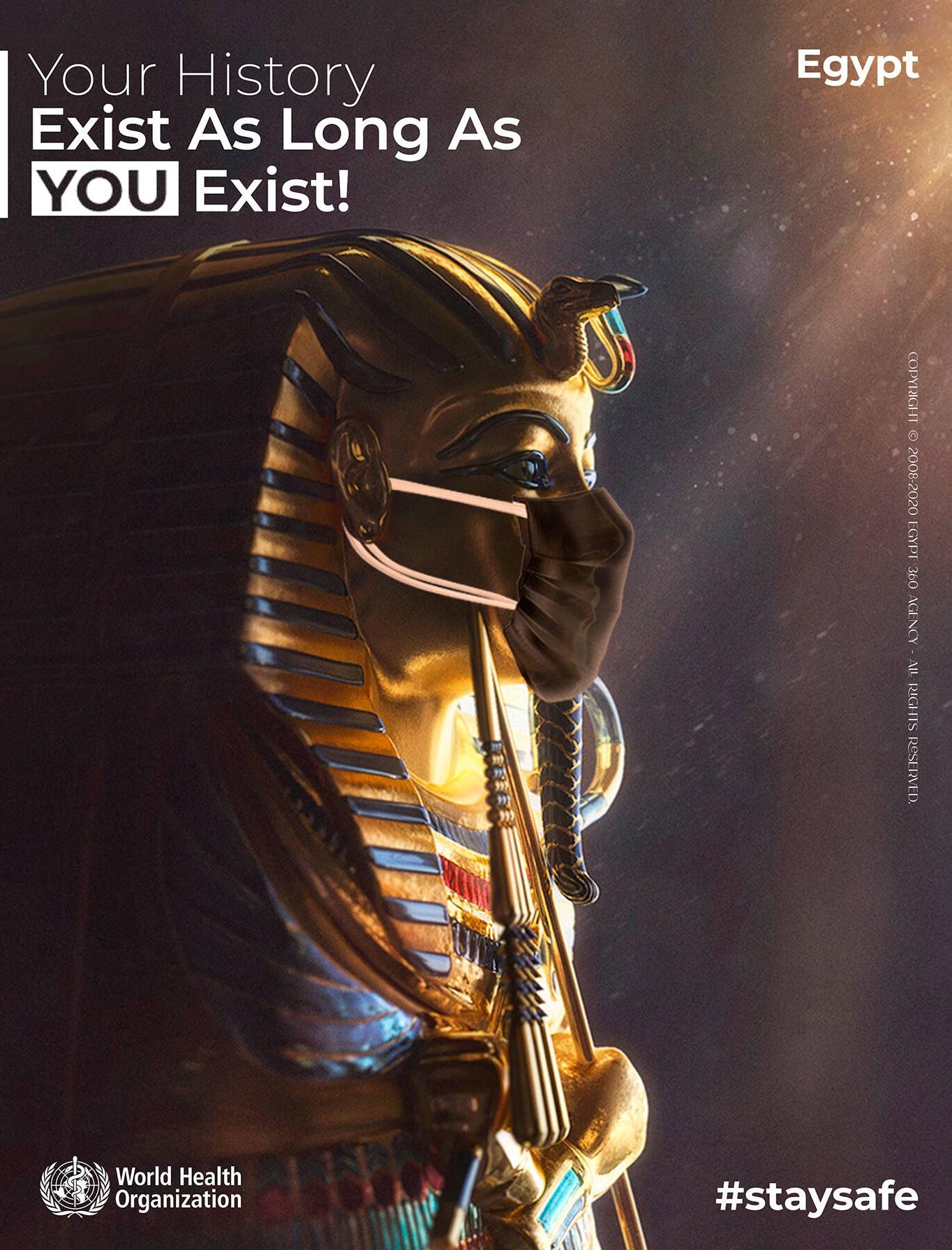


ntroducing digital transformation and technological
Idevelopments in business processes is helping thousands of businesses to flourish and reach remote markets. Having a trusted platform as a partner to guide companies forward in establishing identities assures success. NextgenID is one such trusted platform that provides end-to-end solutions to both government and commercial sectors. In an exclusive interview with Michael Harris, CTO of NextgenID, we ask him a few questions to gain a deeper insight of his role in the company,responsibilities,andinspirations.
NextgenID specializes in providing Trusted Identity Proofing and enrollment solutions for individuals and organizations. The NextgenID Trusted Identity Platform isbuiltonproprietaryhardwareandsoftwarethatallows identity operators to run highly configurable identity workflows that reduce organizational costs, increase efficiency, and centralize functions while maintaining securityandprivacy
NextgenID's industry-neutral solutions revolve around patented “Supervised Remote In-Person Proofing” to
automatically, securely, and “remotely” perform all highassurance proofing & enrollment for its customers. The industry is taking notice as the company is working with some of the largest agencies in the U.S. Civilian, Defense, and Intelligence markets, State/Local Government, International Governments, and global, commercial, cross-verticalorganizationsthroughouttheworld.
With over 30 years of identity and strong authentication experience, Michael has developed broad and deep knowledge in biometrics, smart cards, mobile devices, and credentialling. His career spans several international executives and C-suite positions within the technology, sales, marketing, and product management operations formarket-leadingglobalidentityproviders.
He has worked with the U.S. (DOS, NASA, IRS, DHS, FAA, DOD, NIST, etc.) and foreign governments, Apple, Verizon, Bloomberg, and system integrators delivering AFIS, National Identity, endpoint, and authentication solutions.
As the Chief Technology Officer at NextgenID, Michael applies his technical and commercial insights to define
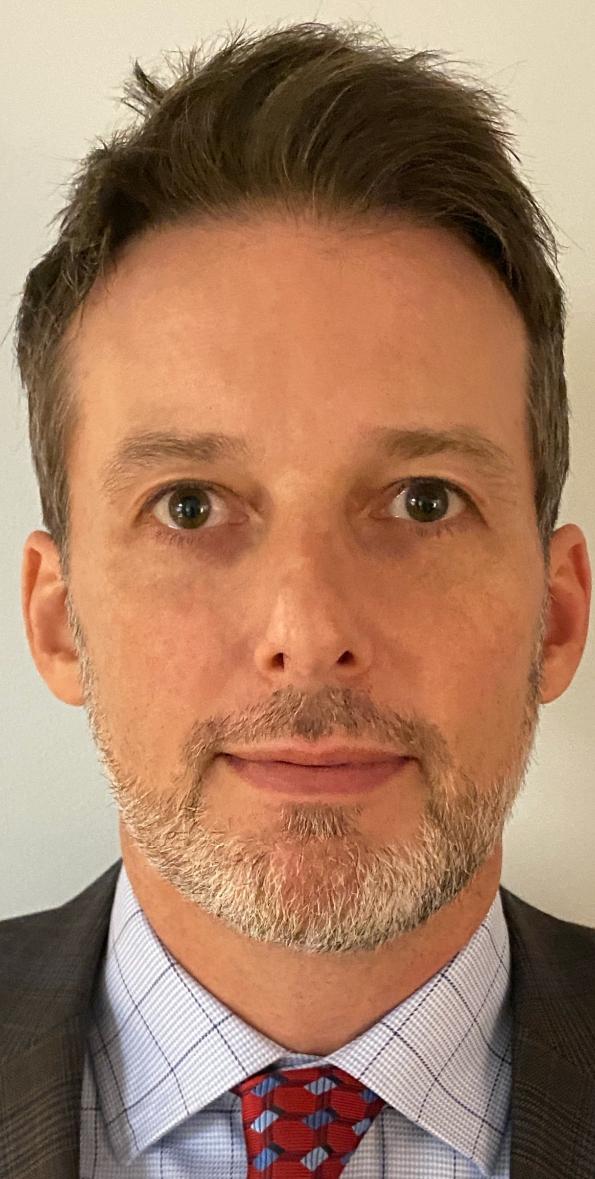
SuccessKPIprovidesacomprehensive platformforcontactcenteranalyticswitha powerfuluser-friendlyinterfaceandstateof-the-artartificialintelligenceandmachine learningengines.SuccessKPI’sinnovativeAI andMLenginestranscribespeech,perform naturallanguageunderstanding,decode sentiment,andmakedecisionstodrive businessoutcomes.
“
MichaelHarris ChiefTechnologyOfficer NextgenID
and execute corporate strategies to capitalize on emerging market trends and incubate game-changing technologies. He is responsible for aligning the strategic technology roadmap and revenue generation while overseeingthedesign-buildoperations.
Michael studied Computer Science and Biology at Moravian College and continues with a focused executive education in strategy at the University of Pennsylvania, the Wharton School. He holds an MBA from the London School of Economics and Political Science.
For Michael, a successful CTO can be described as a confident and humble mentor and shepherd that listens, assembles, integrates, and shares the distilled knowledgeandvalueintroducedbynewtechnologies.
Often being among the youngest of the leadership teams and fully loaded with emerging technologies, the greatest lesson that he learned early was to listen first to what is needed and then to curate those technology assetsforpurposefulimpact.
"I might love AI and Robotics, but does it add value to have an intelligent toaster serve and butter your toasted muffin? Instead, what if we applied technology to automatically match an individual to their ID that saves time and improves data accuracy during an enrollment?,"heasserts.
Technologies are tools but listening and learning from people to understand their perspectives and knowing how and where to leverage those tools is what makes a technologyleaderasuccessfulCTO.
Michael began working with NextgenID amid the pandemic, which was a surreal experience. The entire onboarding process, meeting his team and clients, reviewingtheproducts,allweredoneremotely.
With the "new normal" and people working from home, creating motivation to get employees out of bed in the
morning is a whole new game for business leaders.
Building a self-motivated, self-managed team that can work and function securely and autonomously from homeisanissuehehadtodealwithatNextgenID
The company implemented Microsoft Teams as a tool for collaborationandsocialinteraction.Havingdailyscrums, using chat and video calls has helped the company overcome the remote work challenge, retain momentum andmotivation.
Understanding technology is less than half the job of a technology leader. The equal, if not greater, share of the role is to understand the market and clients so that the company may apply the right technologies to solve the clients'problems.
It is easy to get lost in new technology for the sake of the technology, but what appeals to the clients is applying those technologies to help them solve problems. NextgenID aims to use AI or machine learning, for example, to save time and resources on a specific onboarding process, or to utilize edge computing and IoT toassistwithremotemonitoringandsecurity Michael's influence as a technology leader comes from understanding and sharing the client's pain points. He maintains a regular cadence of discovery calls with partners and customers, to visit with them at their places of work, and to walk through their use cases and daily operations.
Innovation is happening at ever-increasing rates as technology spans the globe and reaches more diverse contributors. Cloud computing, internet connectivity, and mobile technologies among others are enabling collaboration on a massively parallel scale thereby increasingtherevolutionofnewideasandtechnologies.
Technology leaders must strive to recognize these monumental shifts in how ideas germinate, and how new
technologies are incubated. The ability to masterfully shepherd and leverage the introduction of these efforts is what will separate the great technology leaders of the future.
NextgenID believes that identity is a right and requirement, not a privilege. Individuals have the right to identify as themselves and know the identity of entities with which they interact, whether people, organizations, or devices High assurance identities are rapidly becoming a requirement for daily interactions in our post-COVID,sociallynetworkedsociety.
Already today, many individuals require a trusted identity to access their remote work assets, office buildings, cars, finances, and even their smart homes. With Identity Starts, the company stands at innovating thewayidentitiesarecreated,stored,andconsumed.
His team of subject matter experts is actively designing the next generation of identities. They are integrating artificial intelligence and machine learning, cloud, and blockchain into remote proofing of high assurance identities, creating new methods for identity providers to run their programs, proof enrollees, and issue their credentials.
The company is also working actively with the channel partners to create a distributed public identity infrastructure where multiple entities can operate as tenants of this infrastructure to deliver enrollment and proofingservices.
Through this distributed network, citizens will benefit from shared identity and credentialing service offerings including national identity programs, driver's licenses, visa and passport programs, notary services, healthcare, corporate, financial, and academic identities, to name a few.
Once enrolled, citizens may be issued a high assurance mobile credential to store securely on their digital wallets for convenient authentication. By blending mobile wireless technologies and high assurance
identities, citizens can share identities conveniently and securely.
As the CTO, one of the most valuable attributes, according to Michael, is the ability to separate noise from valueregardingnewtechnologies.Eachweek,heisasked to remark on emerging technologies, buzzwords that are in the news, like crypto, AI, blockchain, quantum computing, LIDAR, augmented reality, Internet of Things (IoT),etc.
Technology can be a tremendous tool when applied judiciously to the overall solution to introduce capabilities of value that make sense to the company and market.
The key for a successful CTO is to distill the understanding of these new technologies to the broader audience and introduce and integrate these capabilities and toolsets into products only when they make a valid andvaluedcontribution.
He states, "One of the things that helped me throughout my career is recognizing, It is ok to be different and to embrace our individuality and uniqueness. You can do thisbothasanindividualandasanorganization."
The bold, the unique, the individual is where the magic comes from. To capitalize on this as an organization, the leaders must build a challenging yet rewarding environment based on the company's unique personality
NextgenID embraces being different, working and operating in unique ways that honor and reward diversity.Theteamisenabledtorunwiththeirideas,take ownership, and differentiate between strategic and tacticalobjectives.
This freedom gives them the ability to self-drive and motivate, and the company has witnessed wild productivity gains. NextgenID started about a year ago, during the height of social distancing, and the inclusion of diversity keeps their spirits alive and reminds the team thateveryoneaddsvalueandperspective.

Flarge amounts of food wastage all around us. Its journey from fields to grocery stores and then to our plates, the more steps the process contains, the more is the wastage Not just plastic but food wastage is detrimental to the environment too. Recycling and upcycling are concepts that are now taught in schools, but these practices should be implemented in every step of our lives, even while managing the food supply chain. To leverage this responsibility, NETZRO is an out-of-thebox company that uses modern technologies to take the food production supply chain to the sustainable route. To dig deeper into this noble cause that is the need of the hour, we interviewed Dr. Garrick Villaume, Co-founder andCSTOofNETZROSBC.
rom farm to plate, studies suggest that there are
products is an operations model based on an “upcycling hub” for servicing local concentrations of distinct byproducts, such as the grain leftover from alcohol production Garrick's team is also working with producers of different byproducts to integrate the processdirectlyintotheirnativeoperations.
Garrick Villaume has a rich background in high energy physics working with instrumentation, computational, and analytical systems to test models and refine the understanding of energy and matter. For over 25 years, Garrick worked in the data storage and solar industries that dealt with developing analytical decision support systems spanning lab, fab, and field for global technology enterprises.
NETZRO SBC is an early venture developing solutions for upcycling byproducts in the food production supply chain. The company aims to reduce food waste, recover viable nutrients, and re-harvest the intrinsic value of materials that are otherwise disposed of in the environment. NETZRO's proprietary process platform for upcycling various excess and unused portions of food
A few years ago, he resolved to develop and apply t e c h n o l o g y f o r s u s t a i n a b l e g r o w t h a n d t o #MakeGreenWork. Garrick met Sue Marshall, NETZRO's CEO, volunteering as a mentor for the Cleantech Open business accelerator. He was drawn to the food waste challenge she was targeting because of his upbringing in straddling rural and urban worlds, and his professional expertise in reducing scrap and waste,
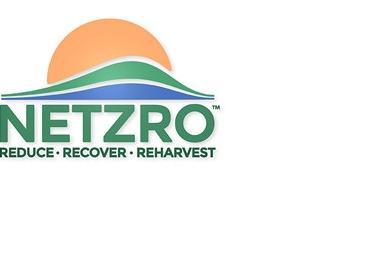
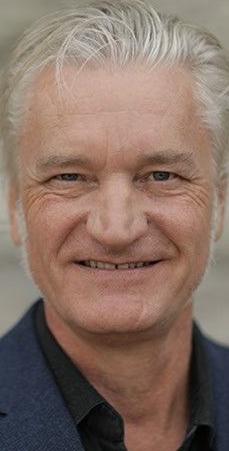
Technologyisameans,notanend.Itisby,for, andofpeoplebydefinition.Allourendeavors, andenterpriseandmasteryovertheworld aroundushavevalueonlytotheextentthey generatesustainedprosperityforpeople.
Dr.GarrickVillaume Co-founderandCSTO NETZROSBC
“
“
maximizing yields and operations efficiency, and improvingproductqualityandreliability.
On the whole, Garrick's job as the Chief Science and Technology Officer is to develop technology and processes for transforming raw materials into products and grow the company's capability and capacity to link diverse sources across entrenched supply chains to multiple,complexmarketchannels.
Garrick believes that every experience leaves some i m p r e s s i o n . S t r i v i n g f o r s o m e t h i n g n e w o r extraordinarily difficult with “everything” at stake tends to shape us the most. Talking about the challenges, he expressed how completing his PhD as a married father of four while working full-time as an engineer tempered his resolve Developing and producing new recording technologies and advanced data storage products by collaborating with diverse global teams to deliver outstanding performance taught Garrick essential management and leadership skills. Working on seemingly intractable problems in resource and material utilization have led him to recalibrate his value system forunderstandingconceptslike“returnoninvestment”.
Going back to the memory lane, Garrick spoke about how he started his family while still in school, and then began working professionally before completing his dissertation That was hard on Garrick's wife and children, in the same way it was difficult for him. Soon after receiving his doctorate, Garrick began to grow in his organization and faced the typical challenges of work life balance along with the pros and cons of growing ambitions in an intensely competitive environment. After the downturn circa 2009, making the transition from Fortune 500 enterprise to a startup in a different industry presented new challenges to his technical, management, and leadership skills. Some knowledge and experiences served him well, others not so much, requiring “reweighting” of his preferred methodsand“best”practicesformakingdecisions.
As the Co founder and CSTO of NETZRO, Garrick explained about the core of his business, which is enabling new value chains with systems to convert scrap and byproducts into nutritious ingredients The company is growing the ecosystem to sustain its model while scaling the capacity to serve it. Garrick and his team strive to prove the potential of the products, demonstrate its efficacy for delivering them to emerging, growing markets, and satisfy the needs of producers to handle their byproducts completely and safely The company's innovation model begins with identifying the product potential of a given byproduct, then involves applying the physics needed to harvest its intrinsic value in a cost-effective process platform, and concludes by demonstrating a commercially viable business model for sustainingitsongoingtransformation.
Garrick's take on disruptive technologies comes from his practical experience of working in the tech field He believes that disruptive technologies have clear benefits, including capabilities to solve complex, previously intractable problems but these technologies are also fueling rapidly increasing complexity, uncertainty, and risk in every aspect of business. Solution times and process error rates may be reduced, but the impacts and consequences of mistakes, biases, and faults may be substantially amplified, and the cost and time of recovery of systems gone awry or otherwise compromised is increasing, not shrinking. “Looming over it all are the specters of security and the ethical quandaries of running analytics on people Such “disruptions” are certainly not all good and arise from misguided expectations and unwarranted haste to accelerate outcomes that may not be actual improvements while overlooking significant hidden costs and undesirable or unsustainable dependencies”, he added. Garrick asserts that it's critically important to realize that technology is
by, for, and of people. Both the purpose of technology and the potential for misuse or abuse and the total costs and impacts must be weighed when deciding what, when, and howtodevelopandapplyit.
NETZRO is positioned to grow dramatically with the emerging upcycling industry. Garrick and his team of skilled professionals are leading the way, developing the value proposition from both ends of the supply chain: more and better food for less waste and lower environmental impact. The company's base technology has exceptional potential and can be applied to a wide range of valuable materials and configured for operation in diverse process settings. NETZRO is embedded in the sustainable food movement and is a founding member of the Upcycled Food Association The company has recently been recognized by some international food companies and is negotiating long term contracts to upcycle byproducts with several large businesses. As more people appreciate the quality and nutritional value of ingredients upcycled from currently wasted food
byproducts, NETZRO is poised to establish sustainable commercialecosystemstoprovidethem.
According to Garrick, successful leaders guide people and organizations to achieve greater goals and accomplish difficult tasks together, in harmony. “In my experience, the best leaders are curious characters and avid learners. They are interested in subjects beyond their primary professional discipline, integrate knowledge and insights from diverse domains, and promote development and learning throughout their organizations”, he further explained. These qualities typically go with the conventional attributes associated with leadership, including integrity, honesty, empathy, compassion, and fortitude. His valuable advice to emerging tech leaders is the fact that it's all about people and it's crucial to remember that. He acknowledges that all our mastery of technology means nothing if it isn't helpingpeoplelivemoresecurelyandcomfortably.

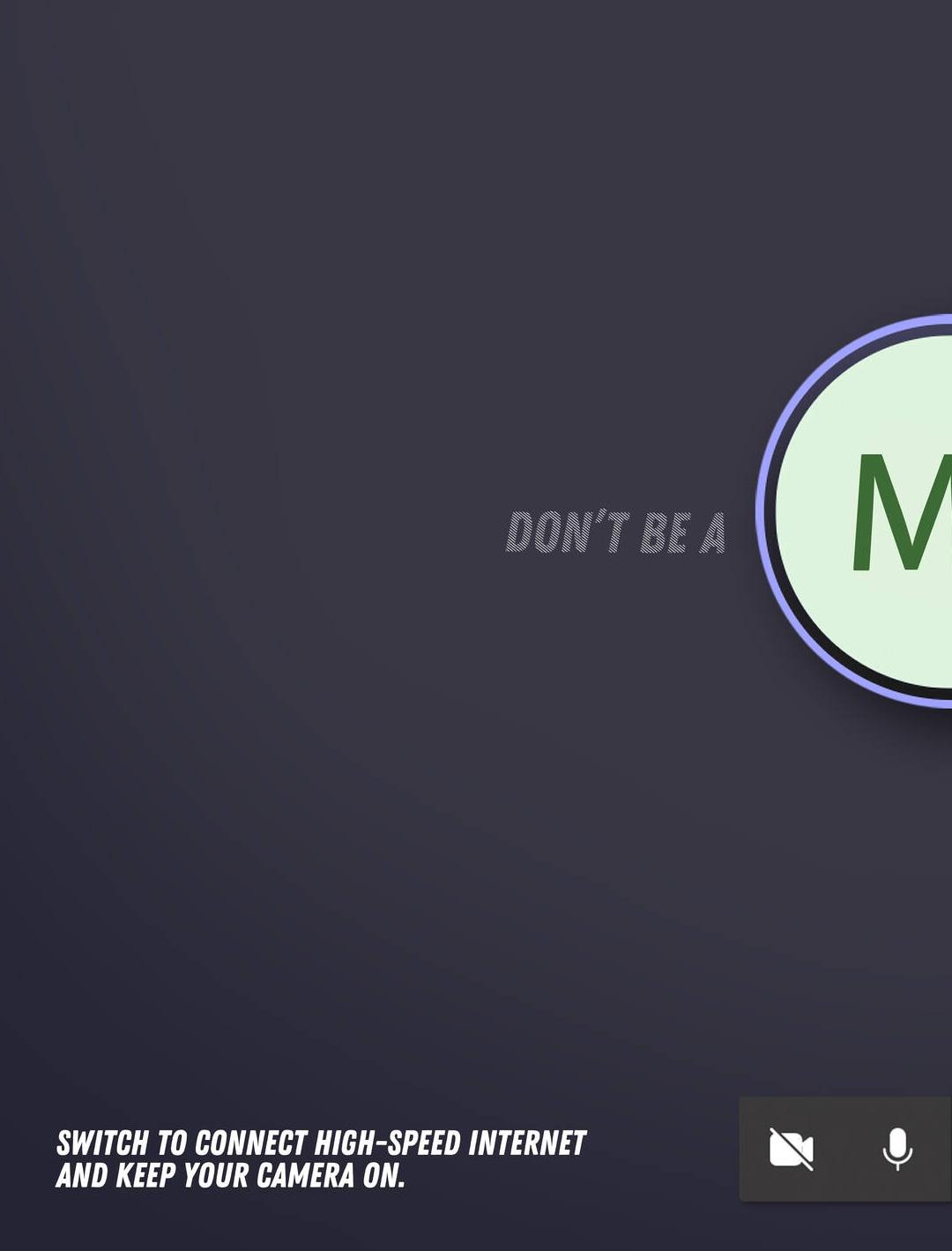
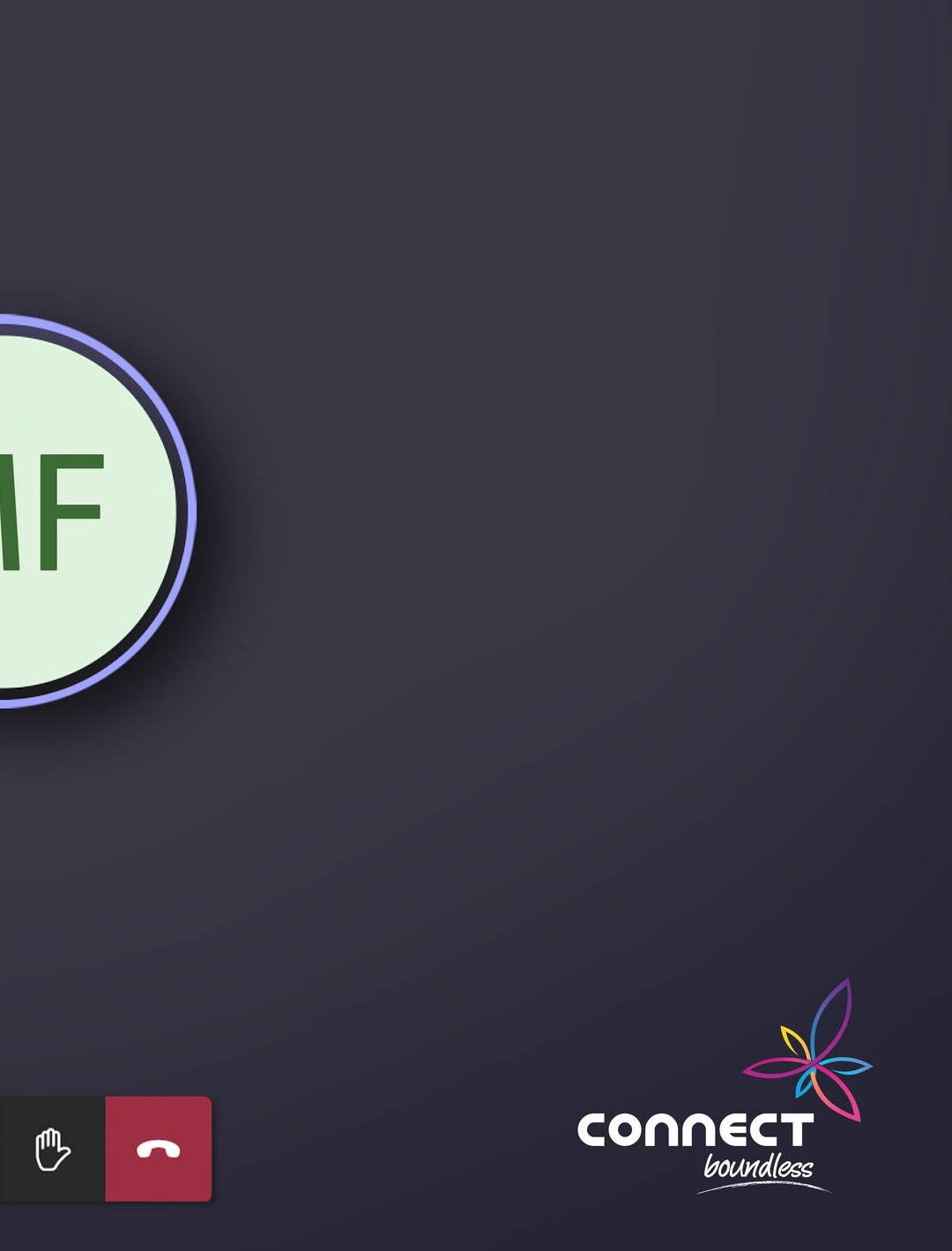
BM GBS is the leading global provider of digital
Itransformative capabilities that completely shape how the technical journeys of companies, organizations and governments can reach new levels. From infrastructure and DevOps to Ethical AI and conversational NLP, IBM GBS specifically are world leaders in the implementation and delivery of these services.
As the Chief Data Scientist and AI & Advanced Analytics practice leader for Middle East and Africa, Dr. Eva Marie Muller Stuler has had the opportunity to spearhead some of the most transformative solutions for their clients and observe these innovations change and shape industries across the globe She has implemented Centres of Excellence, created value-based AI delivery in Oil and Gas, the Financial sector and Governments, and architected real world value using data science for tangibleoutputs.
As a capacity builder within GBS, Dr Eva has taught at universities, held seminars and conferences and worked with women-in-tech organizations across the globe. She
is the SME for Data Science, a member of the prestigious IBM Academy of Technology and part of a larger community of specialists working to enhance AI for good acrossallindustrysectors.

Havinghadtoworkharderthanotherstoachieveinlarge corporate environments and also to multitask at breakneck speeds to excel in smaller organizations, Dr Eva has learned that success is not the goal; it is simply a stepping stone to the next challenge and from that to the next opportunity. In any role, there are always more challenges, more expectations, and more possibilities of failure, but as a woman in technology, she has always felt that there are always more eyes watching. However, Dr Eva found that by focusing on her core strength, her integrity, and by constantly expanding her skills and knowledge, it is possible to break ceilings and build communities.
Dr Eva has never taken anyone's support for granted. Instead, she has focused on building a team and always workedtoenhanceitscollectivesuccess.

Diversityandtheheightenedunderstanding oftechnologywillprovetobeawinning recipeforIBMGBSaswellasthewider industryinthenextdecade.
“
“
Dr.EvaMarieMuller-Stuler ChiefDataScientistandAI&AdvancedAnalyticspracticeleader IBMGBS
By standing up for herself and her team, she has learned to be respectful of everyone's opinions in every situation.
Dr. Eva mentions, “Not all battles are necessary, but when it challenges my principles, then I will fight to ensurethatmyvoiceisheard.”
“Encourage and build the skills and capabilities of other women and men in your team,” she says. Dr. Eva knows that this ethos will always serve to point everyone towards a common goal. But, importantly, it puts her into a position with her team to learn from their journey together
Lastly, she suggests being kind whenever possible, acceptingthatbeingdirectisoftenthekindestapproach.
Dr Eva reveals the challenges she faced during the initial phaseofherjourney:
Ÿ
Being taken seriously as a technical leader as a womaninamale-dominatedfield.
Dr. Eva works to understand the client's business value and identify what the real purpose of their services will be for them She maintains the that the focus of all innovations is to deliver real-world value. This leads to ethical,contextualandsuccessfulAIimplementations.
According to Dr. Eva, being at the forefront of this technical revolution; delivering on the promise of AI, has been a slow journey However, it is wonderful to see how it has matured from the traditional “disruptive” mentality to more mainstream implementations. This means that the adoption of these technologies is being used in places that change the world for the better. For example, each of the UN sustainability goals has roots in these technologies and they are now so fundamentally transformative that they achieve unsurpassed potential intheiradoption.
Ÿ
Being at the forefront of ideas and technologies and having to promote these for nearly a decade before theybecamewidelyrecognized.
Even balancing Ph D studies and working in a challenging full-time role in financial restructuring was deeplydemanding.
Dr Eva believes that leaders should have some intrinsic qualitieslike:
Ÿ Integrity – Its essential to ensure that the ethical natureofyourpeopleisn'tbeingcompromised.
Ÿ
Honesty – Your team will respond to being treated respectfully and this means being honest with them about what is happening and why it's happening. You findmoresupportinhonestythaninsubterfuge.
Ÿ Knowledge – If you know more about your business, your people, your services and your products than anyone else in the room, you will always come out withasuccessfulresult.
Dr Eva affirms that focusing efforts has always proved to be a winning strategy. By identifying and sharpening the skills, solutions and products, companies can foster the continuous adoption and innovation of the AI sector into the future. Diversity and the heightened understanding of technology will prove to be a winning recipe for IBM GBSaswellasthewiderindustryinthenextdecade.
Dr.Evaasksthemto:
Don't be afraid of failure, but make sure that you learn fromtheexperience
Itisvitaltosupporteachotheracrossallindustries
Therehasneverbeenamoreimportanttimetolead,than now
trata Results is an independent ICT strategy and
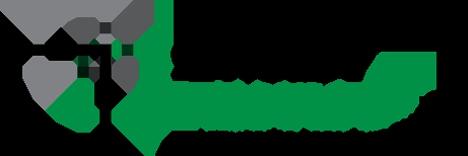
Sbusiness transformation services company with a track record of assisting iconic brands to achieve their business objectives and outcomes on time and within budget. Its approach embodies the human, technology, information, and process capabilities, and when combined with sound methodology, differentiated thinking, and practices, produces profound levels of customerandbusinessvalue. The company's philosophy is to work collaboratively with its client to 'co-create' the strategies and operating models, allowing each of the members to bring experience and skills to bear. Its methodology quickly creates aligned thinking while creating a level of challenge or 'stretch' for the client to maximize the benefitspossible.
Strata Results' capability reflects a comprehensive and proven approach, using internationally experienced technologyleaders.
Shiana Siruma, Vice President Customer Solutions APAC, Strata Results has been a people's leader for 14
years. She is motivated by the passion for a peoplefocused environment and flourishes in meeting with global leaders and engaging for impact. She manages strategies for brand awareness and promotes company offerings through various platforms such as social media, TV,radio,andlivewebstreaming.
Shiana is an industry-agnostic executive– having worked in various industries such as IT/Software Development, Banking, Hospitality, Telecommunications, Education, andOutsourcinginaB2BandB2Cenvironment. She is responsible for forging partnerships and building trust with new clients. Shiana represents SRG's transformative solutions that can fundamentally change the way a business goes to market, behaves as an organization, and makes strategic moves within its industry She also provides her clients proven ways of delivering mission-critical initiatives at a fast pace that leadstoamoresuccessfulandacceleratedoutcome.
“There's always room for learning We spend years perfecting our craft and trying to be the best at it but it doesn'tmeanthatweshouldstopthere,”saysShiana.The

alwaysroomforlearning.Wespend yearsperfectingourcraftandtryingtobethe bestatitbutitdoesn’tmeanthatweshould stopthere
“
ShianaSiruma
VicePresident–CustomerSolutionsAPAC StrataResults
main reason she sticks to her role is that it allows her to meet new, brilliant people every day, and that allows her to learn about their business, their expertise, and their skills, which helps her improve and in the end, share with thosewhoneedguidance.
Failing forward made Shiana resilient as she learned to use failure to find success, get through the hardest times withoutlosingsavoir-faire.
According to Shiana, creating confidence in speaking up to prejudiced superiors who hesitate her potential because of her title, educational background, race, gender, and marital status was a major factor that createdhugehurdlesinherjourney. Being knowledgeable, becoming an expert in what Shiana does and doing, every little thing with integrity and transparency paired with brevity and authenticity propelled her status from being “seen but not heard” to “seen,heardandempowered”.
Shianabelievesthe4vitalattributesbelowarecrucialfor leaderstobesuccessful.
Ÿ
Develop a strong sense of self-awareness – Do what you love and align your values with the organization youlead.
Passionate with people – Transformational leaders are inspiring and can motivate others to rise to the occasion.
Strata Results prides itself on working transparently and collaboratively with its clients, supporting its individual and combined growth for sustainability. It constantly checks the “pulse” of its projects and the health of its client, to ensure that it is delivering a value added service. The company is not afraid to modify its approach based on new industry learnings or a specific cultural differencewithinitsclient'sorganization.
The team at Strata Results constantly asks “what is our differentiation?” The company runs regular planning conferences within its organization, focusing on its methodology growth. Topics such as Data mining, AI, Automation, and Customer Experience drive its discussions. Strata Results researches industry trends and ideas and attempts to expand on those concepts and organize them into applicable strategies that it can deploywhilstserviceaclient.
The company runs “wild card” sessions, whereby its Executive Team discusses ideas that may have not been considered before – new offerings “….as-a-service”, and how that might benefit its clients, and how to leverage existing data mining software to help optimize and automate its client's business. It negotiates with data mining vendors to be able to provide cost effective solutions.
Ÿ
Ability to swim in any ocean of ambiguity – Adapt quickly, think differently about the current situation, and see possibilities where others may see only problems.
Dealing with difficult situations with grace and dignity – Look challenges straight in the eye and never losesightofyourvalues,vision,objectives,andgoals.
Shiana believes that disruption is the new normal. The ability to rapidly respond to change will move from thriving to surviving. An organization's fate will be determined by its ability to rapidly respond to change as operational resilience changes from being a competitive advantage to being a basic requirement. That's why automation is now a top strategic technology trend, accordingtomajorindustryanalysts.
The role of a leader has drastically changed – from seeing how things are going with their organization to being proactive, creating a sense of urgency to drive change by taking a stand for a better, future state while creating an environment that fosters good relationships so that
great ideas can happen As businesses adapt to technology and innovation, leadership embraces more personal interaction with every member in every corner of their organization – high tech perfectly pairs with a humantouch.
Strata Results shares its CEO's vision – to be the “go-to” organization, to successfully deliver a business transformation where the clients are left with the sustainable skills to further run and improve their enterprise. The company believes that clients want to engage at the Executive level to share “skin in the game”
To this end, it creates partnerships with its clients –advising them of the way forward, even if it is not necessarilywhattheywantedtohear–butistruthful.
Strata Results believes that it is time for the words “ethical” and “consulting” to be placed back into the same sentence. This will take courage, openness, and honesty withitsclientsandstaff. ThisiswhereStrataResultsisandwillbe.
On advising emerging leaders, Shiana says “Self awareness is the first major step we need to take to reach our destination of choice. Yes, we must do our best but don't let “perfect “get in the way of being really, really good.”
Shiana is an optimistic person and so she sees obstacles not as torture or hardships but as ways to make her stronger and more capable. She always tells everyone, especially young women, to take time working on themselves – know and own their mistakes, identify their right and wrong choices. “That helps them know their worthandwhentheyknowtheirworth–theyknowwhat they can do, what they can contribute to the workplace and the community. That allows them to choose wisely and never settle for anything less than they deserve. The only thing left is to do all these with faith, a smile, and the windintheirhair”,saysShiana.



Gilytics delivers a Cloud GIS-based platform and service solution that allows users to calculate alternative routes for powerlines, cables, pipelines, roads, and railways It helps energy, engineering, and transport companies save time, money, and CO with better automation, data, visuals, and2 communication. The company aims to become the standard software solution for the planning of linear infrastructure. Gilytics works towards a mission to accelerate the clean energy transition. Launched in 2017, the company is a Spinoff of the leading technical university ETH Gilytics has clients throughout Asia, Europe,andtheAmericaswithheadquartersinZurich. By providing software and data services, Gilytics help clients get more insight from data using environmental, engineering, regulatory, and other customized data impacting project design and to find routes 5X faster using a unique automation process The company visualizes these using analytics, 2D, 3D, and augmented reality to help managers validate and make better project decisions. According to Gilytics, better data aids the clients to connect more renewable projects to the grid and save millions normally lost when projects are delayedduetomanualprocessesandpoordataquality In an interview with Analytics Insight, Heather Pace
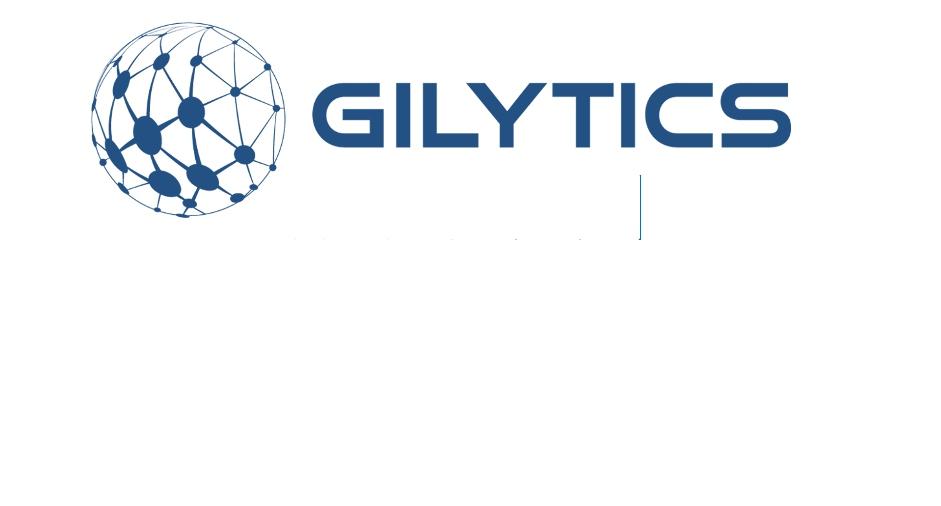
Clark, Co-Founder of Gilytics shares her journey and providesinspiringinsightstoemergingwomenleaders.
Heather Pace Clark completed her MA in International Technology Policy from Harvard. She went on to study MBA from Trium Global Executive MBA and possesses more than 15 years of international experience in technology. She worked as a senior leader at GE Power working in strategic marketing. Heather also worked as head of marketing for the solar company REC Solar driving global expansion, and as a project manager at the WEF, building public-private partnerships with leading software companies like Intel, Cisco, and Microsoft. Working as the head of the sustainability strategy at Orange France Telecom, Heather launched mobile banking and other products building partnerships with Google and telecoms as part of industry associations. Heather began her career by working with the UN and humanitarian organizations. As a Co-Founder of Gilytics, Heather says that her current focus areas are helping the company to grow and manage business development, marketing, partnerships, and sales strategy to reach new markets.
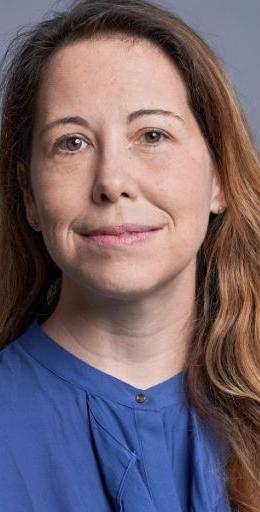
I'mproudtobehelpinglargercompaniesto transitionthroughacrisisandtousedatato bemorecompetitiveandcustomer-focused acrosstheirinternationalfootprint.
“
“
HeatherPaceClark Co-Founder Gilytics
Heather revealed that working at the World Economic Forum with a wide range of tech companies to launch global partnerships addressing the digital divide and education gave her the opportunity to work with many inspiring leaders. Most of these leaders were women in the corporate world, government, or were emerging entrepreneurs, says Heather. Having a lot of role models, the chance to shape these global initiatives and on-theground projects helped Heather understand how technology can transform communities. Heather finds that it was important to learn how one can start with an idea and then build it into a successful initiative.
According to Heather, working with the UN on partnerships and helping to introduce new technology to manage health data, information sharing in disasters, or toimproveeducationwasalsoagreatexperience.
Heather considers her career in large corporates as another important part of her training. She built global sustainability partnerships at Orange that brought new products to market while helping clients to manage data privacy and content standards. Heather says that this taught her the importance of working together with academia, government, NGOs, and industry to establish partnerships and the standards needed to help new technology and the benefits of more data to scale.
Working at GE was a great opportunity to learn how to build a strong company culture and how to transform an organization to become more data-driven, digital, and entrepreneurialthroughamerger,saysHeather
At REC Solar, Heather feels that the challenge was to help a smaller company with relatively new technology, growing 400% a year to reach more markets while managing a lot of regulatory uncertainty and competition from Asia. She notes that this was a great chance to learn how to build the right global team quickly and build partnerships and products in Europe, Asia, and the US when tariffs made supply chains challenging. She found it exciting to bring the most sustainable solutions thatmettheserequirementstomarketfirst.
Heather spent the last few years helping start-ups to scalenewdata-driventechnologies,workingwithmobile banking, AI for insurance, and now in spatial data. She
considers the agility a company can bring to corporate customers to help them innovate faster and make better decisionsanexcitingprocess.
Heather considers the opportunity to work with the UN and the WEF immensely significant. Heather conveys that she is proud to be helping larger companies to transition through a crisis and to use data to be more competitive and customer focused across their international footprint. Helping to shape the policy and partnerships for these industries has also been very interesting.
However, she is enthusiastic about the progress Gilytics is making. The company was recognized as a Top 10 Engineering Startup in Switzerland, a Top Ten Future Grid Start-Up, a Set 100 Global Energy Start-Up, and most recently as an Infrachallenge and Free Electrons Finalist. Gilytic's tool has been used to plan over 10,000 milesoflinearinfrastructure.
She states that introducing new technology and a new approach to data management within organizations resistant to change is a journey that takes grit and multidisciplinary teams. This journey, says Heather, makes it important to show how one can empower teams to make betterdecisionswithamoredata-drivenapproach. Through her vast experiences, Heather learned that it is important to have clear goals while being open to change which can create new opportunities for growth. Good mentors and partners to support one on the way are also significant, according to Heather. She says that building internal and external networks is critical and it is important to keep learning and trying new things to stay updated on trends and drive innovation. Educating and listening to teams, and continually communicating to get them on board for new initiatives is the key, concludes Heather.
Heather says humor and honesty are important skills to use when managing a crisis. Making change happen takes
time and thus she suggests that it is important to be patient and to spend time managing stakeholders and listening to them to understand their fears and interests. Setting a clear vision and showing how one will get the team there while having the courage to pivot and experiment when needed is a key value of a transformationleader,accordingtoHeather.
Heather reveals that the company spends lots of time talking to customers to understand their pain points. In her words, Gilytics usually starts with a pilot project using data from an existing transmission line project and works with them to set up a model, which the company can use to show results in a few seconds. Once the customers see the metrics from their projects, with risks visualized with analytics and the project shown in 2D and 3D that they can interactively update that saves months and millions in the process, they can really see what is possible,saysHeather.
The company monitors policy trends and is active in industry associations and in academic discussions to better understand trends, comments Heather She considers the startup challenges in which the company is participating now as great ways to learn to innovate.
Heather says that Gilytics also develops prototypes and live demos to help clients see how different tools would workandthencollectsfeedbacktoco-createproducts.
Gilytics observes an increased interest in deep learning and in automation during the current crisis as companies aresavingtimeandmoneytoaccelerateremoteworking.
Heather states that cloud computing is scaling as Gilytics' clients could more quickly manage processes. She reveals that many clients need help managing big data and the company's tools can help them get value from data, which is often collected without a clear strategy. Heather finds it important to collect client input into the models Gilytics provides a customizable model and the company is capable to explain the logic used to make decisions It is important that the process is transparent,saysHeather.
The next phase, as per Heather, is making this data more accessible to communities and other external stakeholders to get their input into the infrastructure design process to optimize projects. Heather believes that collaboration between start-ups and corporations can aid companies to innovate quickly with the fastpaced technology and processes that large organizations can often not manage alone. Leaders need to give their teams the freedom to experiment from the bottom up and accept that sometimes things will fail as well as being willing to listen and learn from employees, Heather reiterates. According to her, a less centralized and flatter approach bringing together teams with different expertise and from different geographies will get the best results. They also need to engage a wide range of external stakeholders than ever before to identify risks, opportunities early and act fast, adds Heather A growing interest in net-zero targets and sustainability, as well as circular economy, are making this kind of data more importanttoclientsaswell.
Heather feels that starting a network for women leaders in an organization or community even on a small scale, which includes male leaders, is important. According to her, GE did this approach quite well. Heather states that matching leaders with mentors can be a great way to help. Starting out with small steps, goals, and projects to build confidence and not being afraid to ask for help is very important at any stage in one's career, conveys Heather. She says that more women need the confidence to apply for roles where one may not have all the exact qualifications but can get feedback on what they need to develop in the process can be helpful. Consulting roles are yet another good step according to her, to try different areas and figure out what organization or area could be a good fit and where one's leadership skills might be most needed. Lastly, Heather suggests emerging women leaders focus on what makes them different and how these skills fit the need in the market whilebeingflexibleenoughtoadapt.


Mike Romeri worked as a management consultant for almost 25 years with a firm t h a t ' s n o w o w n e d by P W C b e f o r e
cofounding OPSRules OPSRules was engaged in AI consulting projects with a vision to provide unique, highly sophisticated AI solutions to cater to the needs of the supply chain and price optimization sectors. The company took up several projects starting from earlystage e-commerce companies to Fortune 500 companies providing them with real-time intelligence for decision making. OPSRules was sold to Accenture in 2016 and since then, Mike put a phenomenal team of data scientists and business veterans together to build Analytics2Go (A2Go). The goal at A2Go is to deliver easy-to-use, powerful AI solutions to all businesses so they can continue to compete with the Amazons of the world.
AnAIandDataPioneerLeadingattheFront Mike describes that he has learned throughout his career that change within a company is a very difficult thing to do well and always takes longer than anticipated. He expresses that billions of dollars are wasted every year
on platforms, software, training, and more because companies feel the pressure to use data & AI but they don't know how to make AI-solutions fit their business nor do they have a plan to assure adoption across their workforce. If their decision-makers won't use it, it is worth nothing. One of the biggest barriers to adoption comes from ripping out & replacing existing workflows that were built after years of effort and financial investments Workflows that knowledge workers believe are valuable and do not need to be changed. To solve this problem, Mike and his team build AI solutions that are embedded into the existing workflows, which target a specific, recurring business decision and can be measured.
Mike further articulates that the data & AI markets are very confusing where everyone is describing their solutionsasusingAIwheninreality,theydonot.Buteven for those that do, Mike believes that the same basic problems still exist for the vast majority of companies when it comes to using any new technology, AI in particular, which are getting the right solution fit and gettingadoption.
He says that the 800-pound gorilla in the room for AI
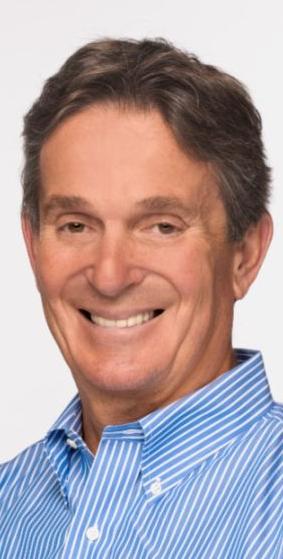
AdvancingtechnologiessuchasAIhave createdaverydynamicbusiness environmentthatisdifficulttonavigate withouthelp.
“ “
MikeRomeri CEO Analytics2Go
solutions is 'data'. Businesses are almost always shy when it comes to questions like “What data do you have that is relevant to this problem?”or “Is all of your data accessible now?” Many just don't know the answers. Mike clarifies thattherewillbedata'issues'innearlyallbusinessesthat are embarking on new AI initiatives. Because of this, A2Go prefers to do a data assessment early on in their engagements and encourages clients to not try to get 'data ready' before they understand the problem they will be solving. In short, businesses should focus on the business need first, not the data they may or may not need.
According to Mike, the biggest initial challenge A2Go faced was changing peoples' mindsets on how machine learning and AI can be used in businesses. Many were familiar with things like robotic process automation (RPA) to automate document processing and directing information from point A to B without a human decisionmaker. In addition, most business leaders were aware of the many prepackaged platforms available in the market that address specific needs but not necessarily the ones each customer has. Early on, it was clear that most business leaders had no idea that there was a better waya way to get AI capabilities embedded into what people already do to improve decision making and see improvementsinrevenueandoperationsquickly
While talking about the vital attributes of a successful leader, Mike says that practicality is what comes to his mind. He explains that when leaders are evangelizing AI at conferences, in articles, etc, more emphasis should be placed on the practical business uses and practical ways that AI can be deployed. As per Mike, deployment and measuring success are two of the hardest parts. A practical, well-defined use case that can be measured and quickly produce ROI, is where the focus should be.
Mike further mentions that most businesses today know they need to up their game in terms of digital transformation to remain competitive. “Customers tell us this all the time, but most do not know how to start or even understand their own data, in general. We try to frameourcustomerengagementsinpracticality-specific tothem,”addsMike.
Mike emphasizes that A2Go builds its solutions based on customer needs. The more customers it works with, the more AI solutions and components it develops. A2Go uses its component 'toolbox' to quickly compose AI solutions as needed. According to Mike, by the term tools, the company means everything from sets of algorithms that it has proven work well on specific workflow decision points, to external data sets it has used to augment a particular supply chain solution, to the hundreds of 'connectors' needed to tie its solutions to ERPs, CRMs, POSs, existing dashboards, internal data sources and more. Every company is a spaghetti bowl of software and workflows, all of it should be considered. Mike further clarifies that no two companies are exactly the same nor do they have the same workflows to make their decisions. After many years of all businesses trying to 'fit' themselves into solutions, it became very clear that solutions must be composed for each customer by taking their existing situation into account Mike is confident that this doesn't have to take years or millions of dollars. For him, this is really the point bringing affordable, easy to use, and targeted solutions to businesses that can change with the business, not confinethebusiness.
EntrustBusinessProblemsto'AIasaService' Mike is always at the forefront of innovation. He believes that technologies that are disruptive and ever-changing will always impact any bottom-line business model by laying a foundation for its future success. “Advancing
technologies such as AI have created a very dynamic business environment that is difficult to navigate without help,” he mentions. Mike jokes that in today's technology race, business owners are playing the game of frogger by jumping from one technology to the next to stay afloat but he warns that oftentimes they jump too fast because of the fear of missing out. Jumping too fast could mean selecting technology before understanding the business need and what data and AI are needed to solve it… For companies like A2Go, understanding, and testing how each new technology best serves customers is its challenge and its expertise. It requires a strong data science team, engineering team, and innovative business thinkers to bring the best solutions to customers. A2Godescribes their model as 'AI as a Service'. Mike believes that the burden of keeping up with fast-moving technology will move the vast majority of non tech companies toward a 'service' model for end-to-end data &AIcapabilities.
While talking about future plans, Mike opines that his vision for A2Go is to build large libraries of AI solutions and solution components to bring the power of AI to businesses of all sizes. This vision includes providing very targeted solutions into existing workflows to augment
human performance in things such as demand forecasting, supply sensing, dynamic pricing, and more. Most businesses simply can't afford the price tag or time to rip out entire workflows and replace them. In terms of the AI software industry, Mike believes that the future lies in targeted, high-value AI solutions, or apps, that are built to be easy to use, easy to monitor, and easy to improvewhenneeded.
Mike advises future leaders to focus on customer needs. First, there are many platforms and solutions out there that don't and can't address every customer's needs—forcing businesses to squeeze their business into multiple solutions. Customers are looking for AI that augments what they already do. Second, “You will quickly learn that even the most amazing AI solution has a small market because very few customers are 'data ready' for it,” he adds. Assume every customer will need help with theirdata.
Also, for those building AI solution companies, Mike asks the leaders to believe in one certainty—customers “will change”.So, he pushes them to build solutions that can change with the business. Mike also believes that they should keep it fun. He likes to think that A2Go works to givehumansmanysuperpowers.

